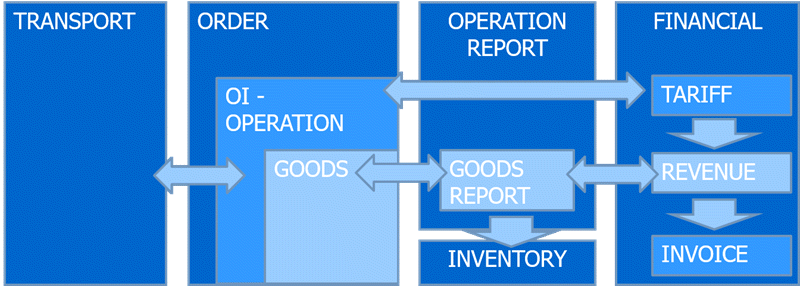iTOS in a nutshell

iTOS is order-driven.
- Users will receive an order from their customer and create an order in iTOS to link all assignments or activities of the customer’s order.
- Afterwards one or more order items are added to the iTOS order with their respective operations. iTOS foresees 5 order item types:
- Discharging: unloading goods in the warehouse/on terminal
- Loading: (re)loading of goods ex warehouse/terminal
- Stock change: used for stock amendments/rectification such as for example changing the owner, properties/attributes, quantities, … of the stock.
- Value Added Services (VAS): e.g. (re)bagging, repacking, blending, …
- Administrative: order item to follow up administrative tasks/services for which revenue could/should be generated. There are no links to existing stock neither to transports.
- (Planned) Goods are added to the order item to specify what type and quantity of goods will be handled.
- A Transport will be created and linked to the order item in case of a discharging/loading order item. Note: One transport item or truck can be used for multiple order items.
- After these preparations the reporting can take place. The actual data is registered in the operation reports and once these are completed the inventory is updated with this latest info:
- For discharging: goods are taken into stock
- For loading: goods are taken out of stock.
- For stock change: stock is updated with the amended details.
- For VAS: stock will reflect the new situation after the VAS operation. In a VAS operation 2 parts are existing namely ‘FROM’ and ‘TO’ part. The goods in the ‘FROM’ part will be taken out of stock, the goods in the ‘TO’ part will be taken into stock. E.g. bulk goods out of stock (FROM) and goods in bags into stock (TO).
- Based on the configured tariffs automatic revenue can be generated upon closing of an order item/transport. The tariffs can be linked to one or more of the following parameters: operation/customer/goods/transport/…
- An invoice can be created by grouping existing revenue lines using the following criteria partner/period/…
Note: All contexts have their own status.
